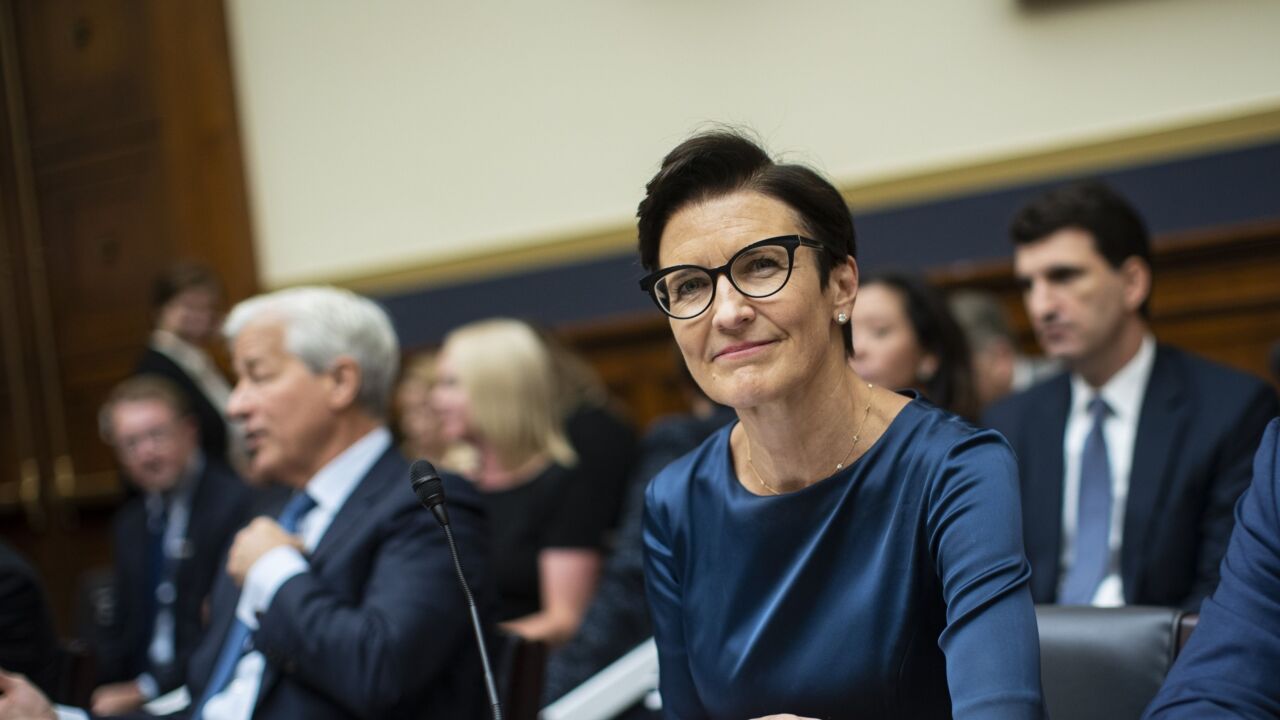-
Banks of all sizes are struggling to increase the revenues and profits that they can eke out of their retail operations while trying to elbow their competitors out of the same turf. To do so, bankers need to face some hard truths about their branches, technology and M&A ambitions.
March 11 -
Cece Stewart, who spent three years trying to turn around Citi's U.S. retail banking operations, is retiring. In an interview, she cited account growth, productivity improvements and cross-selling of credit cards as accomplishments that offset "enormous headwinds."
March 6
ORLANDO Citigroup (NYSE:C), which has spent the past few years trying to get more out of its relatively small U.S. branch network, on Friday unveiled further details of its strategy to reformat its physical locations.
Later this year the country's third-largest bank will reorganize its branches in Miami, as the first part of a larger plan to overhaul its national branch network. In each of the large cities that Citigroup considers to be its main markets, the bank will rely on a mixture of "mini," "compact" and "full-service" branches, supplemented by the occasionally larger "flagship" branch and a network of high-tech ATMs and online or mobile apps.
Citigroup is one of many banks around the country currently rethinking the size, staffing and features of its branches, as more customers rely on online technology for basic banking services. Banks are trying to cut costs without completely eliminating their physical locations, which customers still like to use for more complex transactions, such as mortgage or business loan applications, and financial planning discussions.
But Citigroup is a special case, long having had many fewer branches than its biggest competitors. Since the financial crisis, which saw the bank barely avoid failure and also lose a chance to buy Wachovia and its branch network, Citigroup has struggled to figure out how best to use the roughly 900 branches it has to effectively do business with the wealthy, international, tech-savvy customers it wants.
"I'm not going to be Bank of America (BAC), Chase (JPM) or Wells Fargo (WFC) I'm not going to have 4,000-plus branches. Frankly I don't want them," William Howle, the chief operating officer of Citi's U.S. consumer and commercial businesses and its head of U.S. commercial banking, said Friday at Retail Banking 2014, an American Banker conference.
Citi in the past few years has been selling and closing down branches it considers outside of its core markets; in December, it announced plans to
In an interview Friday, Howle cited the Citi Bike bike-sharing program in New York City, which gave the bank more exposure on the streets and in the non-financial press than it normally commands. Citigroup is looking for similar sponsorship or marketing opportunities in Miami and its other core markets, though it is not yet clear how the bank will manage to replicate the Citi Bike effect elsewhere.
"If you're in those areas, you're going to think Citi is everywhere," Howle says.
He would not discuss specifics of the bank's investment or cumulative changes to its overall branch network, except to say that "the number will not change drastically; the composition will change."
That composition could include "mini" branches of 50 to 500 square feet, intended for some workplaces and special sites; "compact" branches of 600 to 1,200 square feet, which Citigroup intends for shopping malls or public transit areas; and larger, "full-service" branches, of at least 2,500 square feet. Citi also has a handful of larger "flagship" branches in New York, Washington and Los Angeles. It may build more, but Howle said the bank does not necessarily plan one flagship for each of its core U.S. markets, including Miami.
That city will "definitely [have] a full-service branch," but "flagships are expensive," he said. Executives are currently deciding, "Do we do three full-service [branches] or one flagship?"
Howle spoke a week after the surprise





